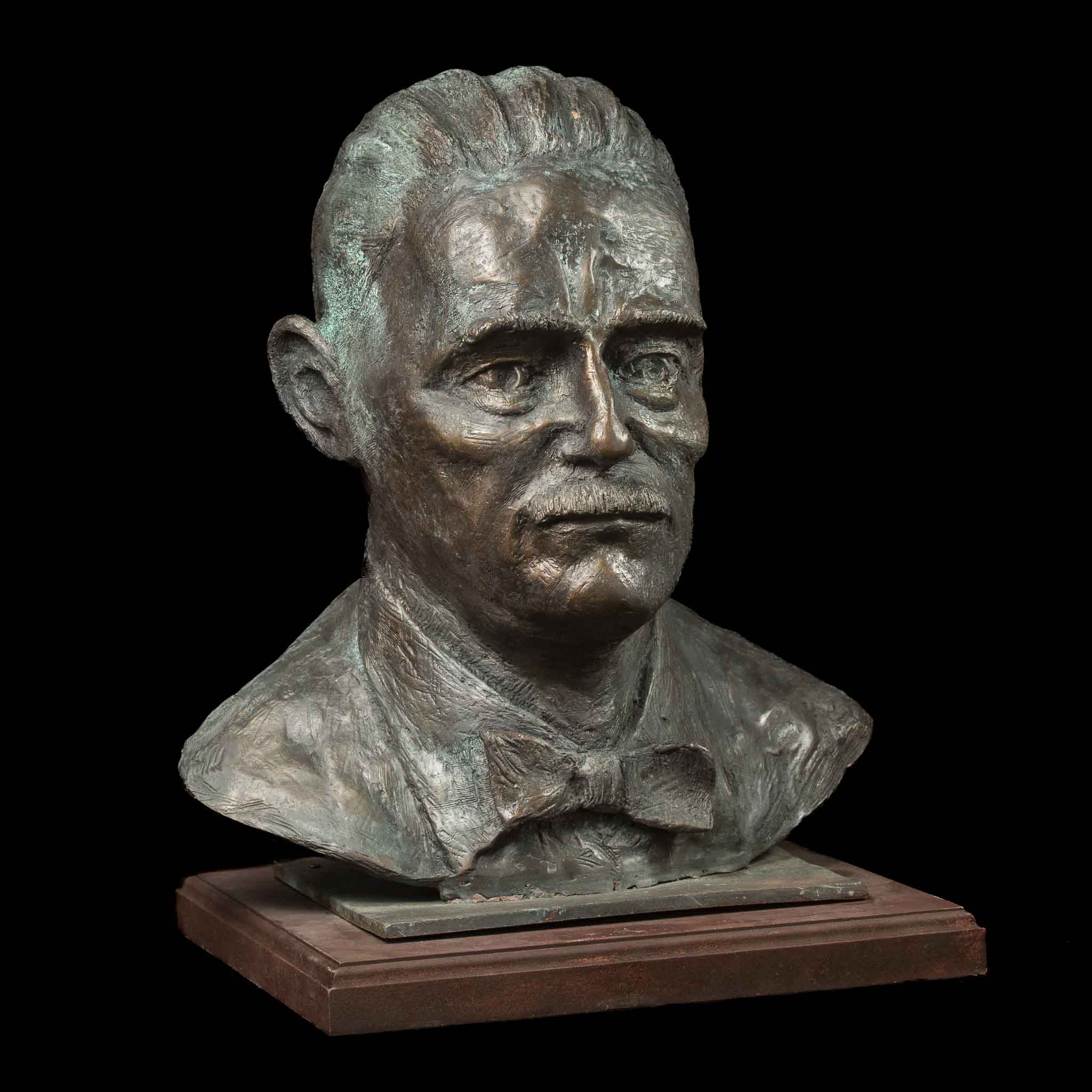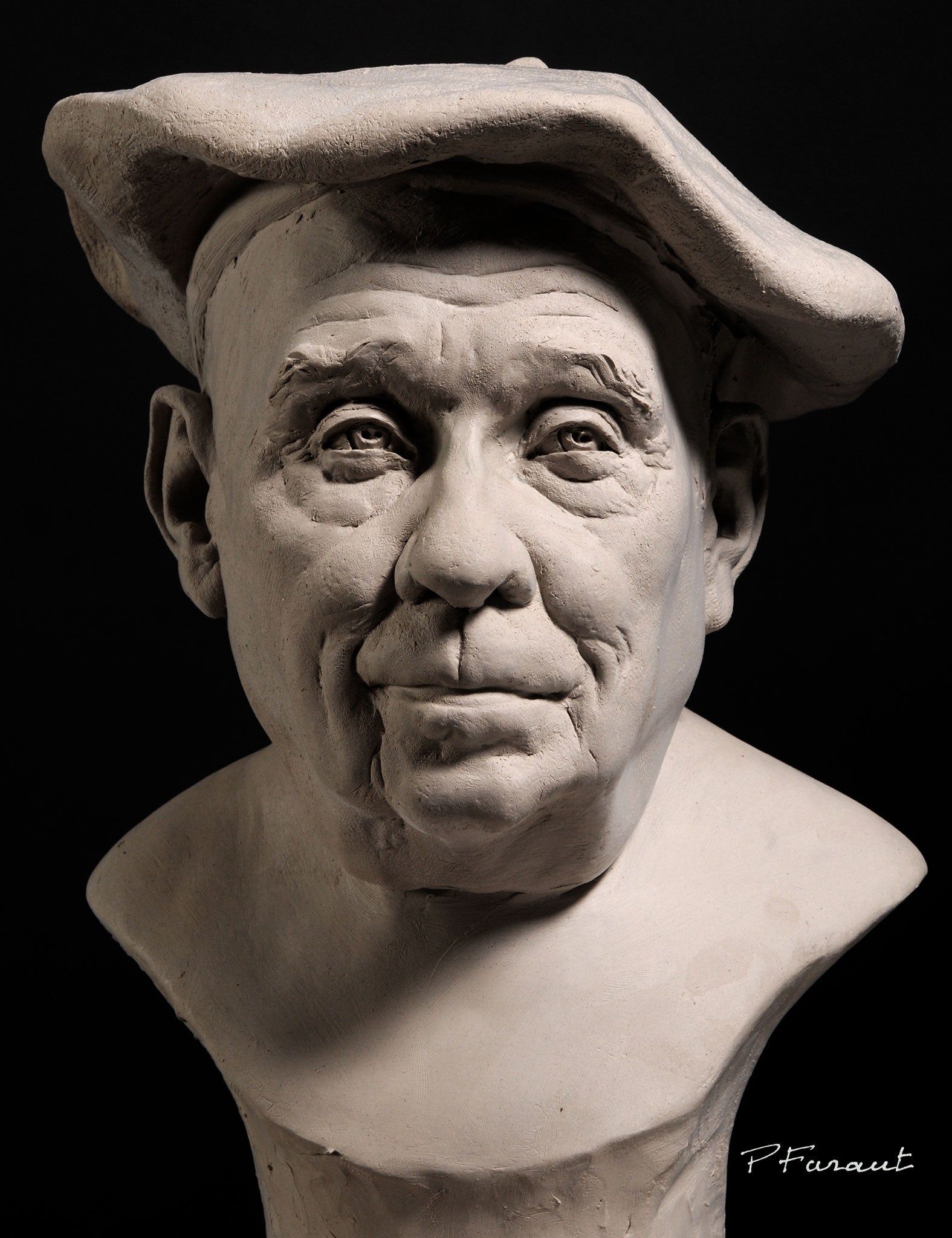The Advancement of Sculptures: From Ancient to Modern
The Development of Sculptures: From Ancient to Modern.
Sculpture, among the oldest kinds of art, has actually been an important part of human world for millennia (Robert C Hitchcock Sculptor). From the ancient people of Egypt and Greece to the modern-day era, sculptures have developed, mirroring changes in artistic methods, materials, and cultural impacts. This journey via time traces the development of sculptures, exploring the shifts stylishly, topic, and artistic expression
Starting with the ancient world, sculptures crafted from rock and later on bronze captured the significance of deities, leaders, and everyday life. The Renaissance period experienced a rebirth of classical sculpting strategies, as musicians sought to replicate the elegant types of old Greek and Roman sculptures. In the contemporary age, artists challenged typical borders, accepting abstraction and testing with new materials.

This expedition will certainly look into the varied development of sculptures, disclosing the abundant tapestry of artistic expression throughout various periods and cultures.
Old Sculptures: From Stone to Bronze
Old sculptures transitioned from being sculpted out of stone to being cast in bronze. Rock sculptures, while remarkable in their very own right, were limited by the nature of the material.
The introduction of bronze as a tool for sculptures caused a change in imaginative expression. Bronze provided artists the opportunity to produce lifelike and elaborate kinds that were not possible with rock. The process of casting bronze enabled the creation of numerous copies of a sculpture, allowing broader circulation and preservation of these creative work of arts.
The change from rock to bronze also saw a shift in the subject matter of sculptures. While rock sculptures predominantly depicted gods, sirens, and mythological figures, bronze sculptures began to show a more comprehensive series of subjects, consisting of everyday people and animals. This growth of topic showcased the flexibility and adaptability of the bronze medium.
Renaissance Revival: Shaping in the Classical Design
The Renaissance revival of sculpture witnessed a revival in the timeless design, building upon the innovations made throughout the change from stone to bronze in old sculptures. Throughout this duration, artists looked for to recreate the classical visual and ideals of beauty that were common in ancient Greek and Roman sculptures.
One of the essential attributes of the Renaissance revival was the emphasis on naturalism and the human kind. Artists like Donatello and Michelangelo strove to catch the anatomical information and expressions of their topics with unprecedented accuracy. They examined the human body and incorporated their monitorings right into their sculptures, resulting in natural and practical depictions.
Another important facet of the Renaissance resurgence was the exploration of point of view and deepness. Musicians used strategies such as contrapposto, where the weight of the body is moved away, producing a feeling of motion and dynamism. They additionally tried out with different products, including marble and bronze, to achieve a degree of elegance and intricacy in their sculptures.
The timeless style of the Renaissance resurgence had a profound influence on later periods of art, acting as a foundation for the advancement of Western sculpture. It brought a renewed appreciation for the elegance and magnificence of the human form, and its tradition can still be seen in modern sculptures today.
Innovation and the Avant-Garde: Damaging Conventional Borders

Among the crucial qualities of modernist sculpture was the emphasis on abstraction. Artists relocated away from reasonable depictions and instead concentrated on catching the significance of the topic with streamlined types and geometric shapes. This departure from traditional depiction enabled artists to express their emotions and concepts in a much more subjective and individual way.
Additionally, the avant-garde movement tested societal norms and conventions, motivating musicians to experiment and press the boundaries of their art - Contemporary Sculptures. Carvers began integrating unique materials such as found things, commercial materials, and even natural environments right into their work. This expedition of brand-new materials and methods not only expanded the opportunities for sculpture however also challenged the standard concepts of what could be considered art
Contemporary Sculptures: Discovering New Products and Concepts
With an emphasis on exploring new materials and concepts, modern sculptures have transformed the area of art. Artists today are pushing the limits of traditional sculpture by experimenting and utilizing innovative products with abstract ideas. These sculptures challenge standard ideas of materiality, meaning, and kind, inviting customers to engage in a brand-new and thought-provoking artistic experience.
Contemporary artists are accepting a variety of products, including plastic, glass, metal, and even natural issue. Portrait Sculptor. They are not restricted to the traditional medium of rock or clay, enabling better freedom of speech and trial and error. This shift towards unusual products has opened brand-new opportunities for artists to produce sculptures that are dynamic, interactive, and aesthetically striking
In enhancement to discovering brand-new materials, modern sculptures also delve into complicated and abstract concepts. Artists are now discovering themes such as identity, social problems, and the environment, utilizing sculpture as a powerful medium for social commentary and self-questioning. These sculptures test visitors to believe seriously and engage with art on a much deeper level, stimulating discussions and prompting emotional feedbacks.
Worldwide Impacts: Sculptural Traditions From All Over The World

In old Egypt, sculptures were produced largely for funerary and spiritual purposes. The renowned sculptures of pharaohs and gods, such as the Great Sphinx and the breast of Queen Nefertiti, display the Egyptians' mastery of stone carving and their belief you could look here in the immortality.
In old Greece, sculpture reached its optimal throughout the timeless duration. Influenced by the suitables of elegance, proportion, and harmony, Greek sculptures stressed the human kind and celebrated the accomplishments of heroes, gods, and athletes. The popular sculptures of Aphrodite of Knidos and the Discobolus exemplify the Greeks' quest of excellence in sculptural art.
In ancient Rome, sculpture served both political and artistic purposes. Equine Sculptures. Roman sculptures usually depicted emperors, generals, and mythological figures, reflecting the power and majesty of the realm. The marble statuary of Augustus of Prima Porta and the monumental Arch of Constantine are significant examples of Roman sculptural accomplishments
Oriental sculptural practices, especially in India, China, and Japan, have additionally had an extensive influence on the development of sculptures. Indian sculptures, such as the delicately carved temples of Khajuraho and the enormous sculptures of Buddha, exhibit a rich blend of spiritual, mythological, and building elements. Chinese sculptures, defined by their great craftsmanship and focus to information, commonly portray deities, animals, and fabulous figures. Japanese sculptures, affected by Buddhism, highlight simpleness and serenity, seen in the peaceful sculptures of Buddha and the stylish art of bonsai.
The global influences on sculpture continue to evolve in the contemporary age. As we look to the future, it is certain that the worldwide influences on sculpture will continue to form and redefine this old art type.
Final Thought
Finally, the development of sculptures has seen a shift from old rock and bronze functions to the classical revival during the Renaissance. This was followed by the breaking of typical limits through modernism and the avant-garde activity. Today, contemporary sculptures check out new products and concepts, while additionally attracting motivation from worldwide sculptural traditions. The trip of sculptures mirrors the ever-changing imaginative expressions and cultural influences throughout background.
From the ancient people of Egypt and Greece to the modern-day age, sculptures have advanced, mirroring changes in creative methods, products, and cultural influences.Starting with the old globe, sculptures crafted from stone and later on bronze caught the essence of divine beings, rulers, and daily life.Old sculptures transitioned from being carved out of stone to being cast in bronze. While rock sculptures primarily shown gods, goddesses, and mythical numbers, bronze sculptures started to mirror a broader variety of subjects, including everyday individuals and animals.In verdict, the evolution of sculptures has seen a shift from ancient rock and bronze functions to the classic rebirth throughout the Renaissance.